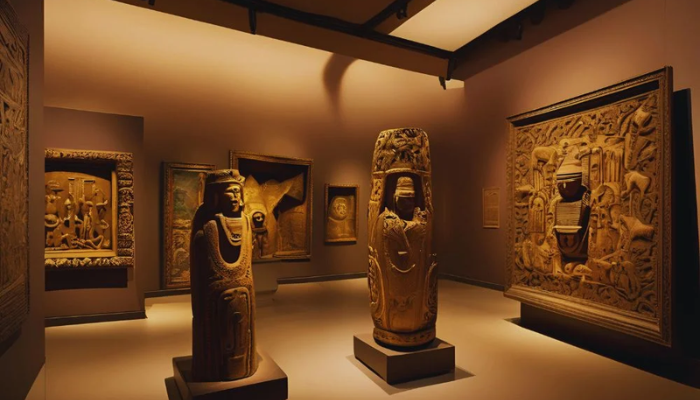The captivating world of ancient artz offers a profound window into the lives, beliefs, and imaginations of early civilizations. From cave paintings to intricate sculptures, these masterpieces are not just relics but stories etched in stone, clay, and pigment. The term “ancient artz” encapsulates a wide array of artistic expressions that laid the foundation for modern creativity. In this article, we’ll explore how these ancient wonders shaped human culture and continue to inspire us today.
The Origins of Ancient Artz: A Journey Through Time
The Dawn of Creativity
The earliest evidence of ancient artz dates back to the prehistoric era, around 40,000 years ago, when humans first began creating symbolic representations. Cave paintings such as those found in Lascaux, France, depict vivid scenes of animals and hunting rituals. These works are more than simple decorations; they symbolize humanity’s attempt to connect with their environment and each other through storytelling and shared experiences.
This era also saw the rise of small sculptures, like the Venus of Willendorf, which are believed to have represented fertility and spiritual beliefs. These early expressions showcase humanity’s innate drive to interpret the world visually, laying the groundwork for artistic traditions.
The Role of Materials and Tools
Prehistoric artists used natural materials such as charcoal, ochre, and limestone, crafting their tools from bone, flint, or wood. The choice of medium and technique often depended on the resources available, reflecting the ingenuity and adaptability of ancient cultures. This connection to nature underscores the harmonious relationship between early humans and their environment—a key theme in the study of ancient artz.
Ancient Artz Across Civilizations
Mesopotamian and Egyptian Art: The Cradle of Civilization
Mesopotamia and Egypt were among the first civilizations to develop distinctive artistic styles. Mesopotamian art often featured intricate carvings and cylinder seals that depicted gods, kings, and mythological creatures. These works served both decorative and functional purposes, emphasizing order and divine authority.
Egyptian art, on the other hand, is instantly recognizable for its hieroglyphs, pyramids, and statues like the Great Sphinx. Artists employed strict conventions to portray figures with symbolic precision, conveying themes of eternal life and cosmic balance. The art of these regions exemplifies how ancient artz was deeply intertwined with religion and governance.
Asian Contributions: India and China
In India, the intricate carvings of the Indus Valley Civilization and later Buddhist art, such as the stupas and Ajanta caves, reflect a spiritual dimension. These works often explored themes of enlightenment, karma, and the cycle of life. Meanwhile, ancient Chinese art from the Shang and Zhou dynasties emphasized bronze casting and jade carving, showcasing exceptional craftsmanship and philosophical underpinnings.
Symbolism in Ancient Artz: More Than Meets the Eye
The Power of Mythology and Religion
Many works of ancient artz are steeped in symbolism, offering insights into the spiritual and mythological frameworks of their creators. For example, Greek pottery often depicted scenes from mythology, blending aesthetic beauty with storytelling. Similarly, Mayan and Aztec art featured motifs of gods, rituals, and cosmology, reflecting their deep connection to the divine.
Interpreting Colors and Patterns
Colors and patterns in ancient art carried specific meanings. In Egyptian art, for instance, green symbolized fertility, while blue represented the divine. In African tribal art, geometric patterns often conveyed cultural identity and spiritual beliefs. The use of such visual codes highlights the intentionality behind these creations, revealing their role as both art and communication.
Techniques and Innovations in Ancient Artz
The Mastery of Sculpture and Architecture
One hallmark of ancient artz is its pioneering approach to sculpture and architecture. Greek and Roman artists achieved lifelike representations of the human form, as seen in sculptures like the Venus de Milo. These achievements were matched by architectural marvels such as the Parthenon and the Colosseum, which combined aesthetic beauty with engineering ingenuity.
Elsewhere, in Mesoamerica, the stepped pyramids of Teotihuacan and intricate Mayan stelae demonstrate advanced construction techniques and an eye for detail, blending function and artistry seamlessly.
Advancements in Painting and Ceramics
From frescoes in ancient Rome to painted ceramics in China, ancient artists pushed the boundaries of their mediums. The fresco technique, perfected in places like Pompeii, involved applying pigments to wet plaster for durability and vibrancy. Similarly, the development of porcelain in ancient China showcased a mastery of firing techniques and aesthetic refinement that remains unmatched.
The Legacy of Ancient Artz in Modern Culture
Inspiration for Contemporary Artists
The influence of ancient artz is evident in modern art and design. Contemporary artists often draw from ancient motifs, techniques, and themes, reinterpreting them for today’s audiences. For example, Picasso’s fascination with African masks influenced the Cubist movement, while Art Deco borrowed heavily from Egyptian and Mesopotamian aesthetics.
Preservation and Global Heritage
Preserving ancient art is crucial for understanding human history. Organizations like UNESCO and museums worldwide are dedicated to safeguarding these treasures. Efforts to protect sites like the Angkor Wat in Cambodia and the rock art of Tassili n’Ajjer in Algeria ensure that the legacy of ancient artz endures for future generations.
Conclusion
The study of ancient artz is a journey into the heart of humanity’s creative and cultural evolution. These timeless works reveal the diversity and depth of human experience, connecting us to our ancestors and inspiring us to envision new possibilities. By appreciating and preserving ancient art, we honor the enduring legacy of human ingenuity.
FAQs About Ancient Artz
- What is the significance of ancient artz?
Ancient artz provides insights into early human cultures, beliefs, and innovations. - Where can I see ancient art today?
You can view ancient art in museums, archaeological sites, and UNESCO World Heritage sites. - What materials were used in ancient artz?
Artists used natural materials like stone, clay, pigments, and metals. - Why is ancient artz important for modern artists?
It serves as a source of inspiration and a foundation for artistic traditions. - How were ancient artworks preserved?
Many were preserved by natural conditions or deliberate efforts like burial and conservation. - What is the oldest known piece of ancient art?
The oldest known artwork includes the cave paintings at Chauvet-Pont-d’Arc in France. - How does ancient art differ across cultures?
Each culture’s art reflects its unique history, values, and environment. - What are some famous examples of ancient artz?
Examples include the Lascaux cave paintings, the Pyramids of Giza, and the Parthenon. - What role did religion play in ancient artz?
Religion was a central theme, influencing symbols, motifs, and subjects. - How can we preserve ancient artz for future generations?
Preservation involves protecting artifacts, restoring damaged works, and educating the public about their importance



